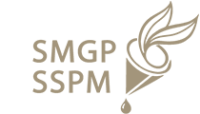Autism Treatment
14 Minutes
CONTENTS
- According to 2018 estimates, approximately one in every 44 children in the United States is diagnosed with an autistic spectrum condition (ASD).
- Boys are 4 times more likely than girls to be diagnosed with autism.
- The majority of children were diagnosed after the age of four, although autism can be effectively identified as early as age two.
- Thirty-one percent of kids with ASD have a cognitive deficit (IQ 70), 25 percent have an Intelligence quotient in the borderline range (IQ 71–85), and 44 percent have IQ scores that are average to just above average (— in other words, IQ >85).
- Autism affects people of all races and socioeconomic backgrounds.
- Minority populations are diagnosed late and less frequently than other groups.
- Early treatment provides the best chance to promote healthy development and provide long-term benefits.
- Autism is not diagnosed with medical investigations
Behavior and communication practices at high-end rehab centers that aid children with Autism Spectrum Disorders (ASDs), as per the findings of the American Academy of Pediatrics and the National Research Council, are those which offer a framework, guidance, and organization for the kid, as well as family participation.
Applied Behavior Analysis (ABA)
Applied behavior analysis (ABA) is a well-known therapeutic method for individuals with ASD. ABA has gained widespread acceptance among healthcare experts and is now employed in a variety of schools and clinics. To enhance a wide range of skills, ABA promotes positive behaviors and prohibits negative behaviors. The progress of the kid is evaluated and recorded.
ABA comes in a variety of forms. Some examples are as follows:
Discrete Trial Training (DTT). DTT is an instructional approach in which each stage of a desired action or response is taught through a series of trials. Lessons are simplified down into their basic components, and successful answers and behaviors are rewarded with positive reinforcement. Improper responses are not taken into account.
Early Intensive Behavioral Intervention (EIBI). This is a kind of ABA for children with ASD who are under the age of five and commonly under the age of three. EIBI employs a highly structured training method to promote beneficial behaviors (like social communication) while reducing undesirable behaviors (like aggression, self-injury, and tantrums). Under the guidance of a qualified professional, EIBI occurs in an adult-to-child one-on-one setting.
Denver’s Early Start Model (ESDM). This is a kind of ABA for kids ages 1 to 4 years who have ASD. Play and collaborative activities are used by therapists and parents in ESDM to assist children to progress their interpersonal, verbal, and mental abilities.
Pivotal Response Training (PRT). PRT attempts to boost a kid’s desire to learn, as well as their ability to monitor their conduct and communicate with others. Positive modifications in these behaviors are thought to have a wide range of consequences.
Verbal Behavior Intervention (VBI). VBI is a kind of ABA that emphasizes the development of verbal abilities.
Additional therapies for a kid with ASD that can be included in a comprehensive treatment plan at a premium rehab center include:
Assistive Technology
Individuals with ASD can benefit from assistive devices like electronic tablets and communication boards to allow them to communicate and engage with others. Picture icons, for instance, are used in the Picture Exchange Communication System (PECS) to develop communication abilities. The user is taught how to practice speaking, as well as hold a conversation, using pictorial symbols. Other people might use a tablet as a voice generator or a communication gadget.
Developmental, Individual Differences, Relationship-Based Approach (also called “Floortime”)
The emphasis of floortime is on psychological and interpersonal development (relationships and feelings for caregivers). It also considers the child’s reactions to images, noises, and odors.
Treatment and Education of Autistic and related Communication-handicapped Children (TEACCH)
Visual cues are used in TEACCH to facilitate learning. Pictorial cards, for instance, can assist a youngster to learn how to be dressed by splitting data into little steps.
Occupational Therapy
Occupational therapy provides skills that enable a person to live autonomously as much as feasible. Bathing, dressing, eating, and interacting with others are examples of skills.
The role of an occupational therapist
Occupational therapists collaborate with families, schools, and other specialists as members of a collective. They assist individuals with autism in establishing precise goals. These objectives frequently include social contact, behavior, and academic success.
Occupational therapists can assist in two ways: assessment and treatment.
The therapist observes kids see whether they can perform actions that are expected of them at their age, such as dressing or playing a game. The therapist may have the child monitored throughout the day to observe how the children cope with people and objects. This assists the therapist in determining the type of attention the child requires. The therapist might pay particular attention to:
- Stamina and attention span
- Switching to new activities
- Playing skills
- Private space is required.
- Touching or other types of stimulation can elicit a variety of responses.
- Balance, posture, and smaller objects handling are examples of motor skills.
- Other forms of actions, such as aggressiveness
- The kid’s interactions with his or her caretakers
After collecting data, an occupational therapist can create a program for your child. There is no one-size-fits-all therapy option. Proactive, organized, tailored treatment, on the other hand, has been demonstrated to be the most effective.
Occupational therapy can include a range of concepts, such as:
- Regular physical activity, such as stringing beads or solving puzzles, can aid in the development of balance and physical awareness in children.
- Interpersonal communication is aided by play activities.
- Teeth brushing and combing hair are examples of developmental activities.
- Adaptive methods, such as navigating transitions
The advantages of occupational therapy for people with ASD
Occupational therapy’s overall purpose is to assist people with autism in improving their life quality at school and at home. The therapist assists in the introduction, maintenance, and improvement of skills so that people with autism can be as self-sufficient as feasible.
Mood Disorders Luxury Treatment
Occupational therapy can help with the following issues:
- Toilet training, bathing, brushing teeth, dressing, and other personal care skills
- Fine motor abilities are essential for holding objects in their hands when typing, writing, or using scissors.
- Climbing stairs, riding a bike, and walking require gross motor skills.
- Perceptual skills, posture, or sitting such as distinguishing colors, patterns, and dimensions
- Awareness of their own body and how it interacts with others.
- Reading and writing require visual skills.
- Social skills, communication, problem-solving, and self-help
Occupational therapy can help a kid with autism improve these skills so that he or she can:
- Form bonds with both adults and children.
- Understand how to concentrate on a task.
- Learn to postpone gratification.
- Appropriately express emotions
- Interact with other kids.
- Acquire the ability of self-regulation.
Social Skills Training
Kids are taught the abilities they need to connect with others, such as problem-solving skills and communication through social skills training.
Speech Therapy
Speech therapy aids in the development of a person’s communicative abilities. Verbal and nonverbal communication abilities can be learned by some persons. It is more natural for others to use gestures or graphic boards.
The role of a speech therapist in autism treatment
Speech-language therapists specialize in the treatment of language delay disorders and other language-related issues. They play an important role in the autism care team. Speech therapists typically take the lead in assisting with the diagnosis of autism and providing recommendations to other specialists due to early screening and identification.
Speech therapists work out the best techniques to improve communication once autism is diagnosed. The school, family, and other specialists collaborate closely with the speech therapist. If a child with autism is mute or has significant speech difficulties, the speech therapist may offer alternate communication methods, such as:
- “Talkers” on the computer
- Typing or signing
- To assist a kid in learning to communicate, pictures are used instead of words.
- By massaging or training the facial muscles or lips, you can improve your speech articulation.
- Have individuals sing a song that fits the sentence’s flow, emphasis, and rhythm.
Some of these strategies have greater research backing than others. Make sure you talk to the speech therapist and your kid’s pediatrician about them.
The advantages of speech therapy for people with ASD
Speech therapy can help you communicate more effectively. People with autism can increase their ability to develop relationships and operate in daily life as a result of this. Speech therapy’s particular objectives include assisting the autistic person with:
- Well-articulated words
- Use both nonverbal and verbal communication.
- Recognize nonverbal and verbal communication, as well as what other people mean in various situations.
- Begin communicating without waiting for others to initiate it.
- Understand when and where to communicate something, such as when to say “good afternoon”
- Improve your conversational abilities
- Share your thoughts.
- Respond in a way that fosters relationship development.
- Appreciate connecting with others through speaking, interacting, or playing with them.
- Develop self-control.
When should a child with autism begin speech therapy?
Speech therapy should be initiated as soon as possible. Before the age of three, most children with autism spectrum disorder are diagnosed. In kids as young as 18 months of age, language deficits can be seen. Autism can be detected in children as young as ten to twelve months old in some situations. Speech therapy should be started as soon as feasible because this is when it will have the greatest impact.
Two out of three children with autism enhance their communication abilities and understanding of spoken language after receiving early diagnosis and therapy. According to research, people who get the most speech treatment improve the most.
Sensory Integration and Related Therapies
Some children with ASD struggle with sensory issues. Some people are hypersensitive to stimuli like light, sound, and touch. Others aren’t as sensitive as they should be.
A variety of therapies have been effective for treating children with an autism spectrum disorder. Even though these treatments can help, there is no scientific evidence that they are successful in treating the illness.
Sensory treatment for ASD is done one-on-one with a kid by therapists who are trained in this area. The goal is to assist the youngster in regulating his or her response to external stimuli.
If the kid is hypersensitive to touch, for instance, the therapist will try to desensitize him or her over time. To get the kid used to the sensations, the therapist may gently massage the kid’s skin with various textured textiles.
For the kid, the therapist focuses on making the activities pleasant and game-like. Sensory treatment will not become burdensome for them in this way. They aren’t compelled to do something, however, the therapist drives them to their limits to help them progress.
A range of sensory treatments can be utilized to help children with ASD deal with a variety of issues. Rotating in a chair, for instance, has been shown to lessen hyperactivity in certain youngsters. Swing, vibration treatment, and aerobic activity are examples of other sensory therapies.
You and your kid’s therapist may have to try a range of therapeutic approaches to see which ones work best for your child. Your child’s developmental pediatrician or neurologist can also help.
Integrated play groups (IPGs) bring together kids with and without ASDs so that those with ASD can learn to play by following their peers’ lead. Each group has three to five youngsters, with just a few children with ASD.
The adults set the standard for the game, but the kids gradually take over. If your child participates in IPGs, they may begin to pretend to play more frequently over time, and they will have several opportunities to practice social skills while spending time with other children.
IPGs can meet once a week for up to three hours. Children with ASD who participated in two thirty-minute IPG sessions per week for four months increased their play intensity, utilized their toys in more usual ways, and had better social interactions with their peers, according to research.
JASPER (joint attention symbolic play engagement and regulation) can assist your youngster in focusing on both a toy and a person at the same time. They may be able to play with other youngsters if their joint attention abilities improve. The JASPER program can also help your kid indulge in more pretend play, expand their toy play, enhance their social skills, and participate in more imaginative play.
JASPER therapy involves children meeting with a therapist one-on-one. JASPER is a preschool program that is occasionally provided. This form of therapy can last up to twenty-five hours a week for children.
Within a few weeks, you may see that your child has acquired new skills. They may converse more while playing. Alternatively, rather than spinning the wheels, they could be “driving” cars down the incline. According to their needs, this form of therapy could last months or years.
To treat the symptoms of ASD, some dietary interventions have been created which are provided in the premium luxury inpatient and residential rehab. A systematic evaluation of 19 randomized control trials published in 2017 showed no evidence supporting the use of dietary interventions for children with autism.
Some biological therapies necessitate dietary adjustments. Certain foods should be removed from a kid’s diet, and mineral and vitamin supplements should be used. Nutritional treatments are based on the theory that ASD symptoms are caused by food allergies or a shortage of minerals and vitamins. Some parents believe that changes in diet affect their child’s behavior or feelings.
If you’re thinking of modifying your child’s food, consult a doctor or a qualified dietitian first to ensure that your child’s diet contains the vitamins and minerals required for their development and growth.
There are no drugs that can cure ASD or alleviate its symptoms. Medications, on the other hand, can help some persons with ASD operate better. Medication may be used to treat symptoms such as excessive energy, inability to focus, anxiety and despair, behavioral hypersensitivity, seizures, or self-injury.
Medications may not have the same effect on all children. Working with a healthcare provider who has experience treating kids with ASD is critical. While a kid is taking medicine, healthcare providers and parents must regularly watch his or her development and responses to ensure that any bad side effects do not exceed the advantages.
Occasionally healthcare professionals and parents employ treatments that are not normally suggested by clinicians to alleviate the symptoms of ASD. Complementary and alternative medicine (CAM) solutions are what they’re called. Services or products that are utilized in addition to or instead of traditional care are referred to as complementary and alternative medicine (CAM). Specific diets, nutritional supplementation, chelation (a treatment to eliminate heavy metals like lead from the body), biologicals (like secretin), and mind-body medicine are some of the options.
Some of these treatments haven’t been thoroughly researched; also, a review of chelation trials found evidence of toxicity and no indication that it is useful in managing children with ASD. According to recent research, up to one-third of family members of ASD children may have tried complementary and alternative medicine (CAM) treatments, and up to 10 percent may be taking a potentially harmful treatment. Consult your child’s doctor before beginning any treatment.
FAQs
What Causes Autism Spectrum Disorders?
ASDs are thought to be caused by a combination of genes, biochemical, and environmental variables. Researchers are looking into several genes that are thought to play a role in the development of these disorders, as well as several brain areas that have been related to them. Structure irregularities in the mirror neuron networks, for example, are being investigated in the first months of life to see if hereditary and/or external conditions are to blame.
The consequences of genetic imprinting, in which the activation of a gene is controlled by which parent contributes the gene copy, are also being investigated. Dopamine, epinephrine, and serotonin are just a few of the neurotransmitters that might malfunction. In other cases, scientists are investigating the possibility that the disease is caused by a defective immunological response to a virus, high protein levels in the bloodstream at birth, disruption of specific neuropeptides, or significant stress during pregnancy.
How do I determine the most effective treatment for my child or myself?
Early intensive behavioral treatment based on applied behavioral analysis appears to be successful in improving speech, language and communication, functioning, and behavior in people with autism, according to research. Aripiprazole and Risperidone are two medicines that can help with problematic behaviors such as mental anguish, anger, restlessness, and self-injury, but they don’t help with interpersonal skills or language. Interpersonal interactions, language use, communication, and the management of challenging behaviors can all be improved with parent training and cognitive behavioral therapy.
HOW THE BALANCE CAN HELP
The Balance RehabClinic is a leading provider of luxury addiction and mental health treatment for affluent individuals and their families, offering a blend of innovative science and holistic methods with unparalleled individualised care.
A UNIQUE METHOD
a successful and proven concept focusing on underlying causesOur program consists of treating only one client at a time individually designed to help you with all the problematic aspects of your life. All individual treatment sessions will be held at your private residence.
more infoYour program is designed based on your personal needs. The team will exchange daily information and adjust the schedule as we go. Our therapists will work with you treating the root causes and not just the symptoms and goes beyong your stay to ensure lasting success.
more infoOur biochemical imbalance can be affected by diet and stressful life events, but it often goes back to genetics and epigenetics. We do specific biochemical laboratory testing to determine an individual’s biochemical imbalance. Combining the results of the lab tests with anamnestic information and clinical tests, we prescribe an individualized and compounded vitamin, mineral, nutrient protocol to help recover from various disease states.
more infoOur experts combine the best from psychological treatment, holistic medicine to support you individually and providing complementary therapies all coordinated from one source working complementing each other integrative.
more infoUsing latest cutting-edge technology-based therapies such as Neurofeedback, tDCS, and SSP, we can track the biological patterns of your body, giving us valuable insight into your health and well-being as well support your brain and body performance and recovery with neuromodulation.
more infoComplex trauma is often a key factor to distress mental and physical state. The Balance provides a safe space along integrated trauma treatment methods to enable healing.
more infoLASTING APPROACH
0 Before
Send Admission Request
0 Before
Define Treatment Goals
1 week
Assessments & Detox
1-4 week
Psychological & Holistic Therapy
4 week
Family Therapy
5-8 week
Aftercare
12+ week
Refresher Visit
Autism Insights
latest news & research on AutismAsperger’s Syndrome Treatments
Asperger's syndrome is a lifelong condition but several Asperger's treatment techniques are employed to manage this condition
read moreAsperger Syndrome
read more
Autism Statistics
Based on the CDC data, about 1 percent of the global population, or over 75,000,000 people, have autism spectrum disorder.
read more

























































